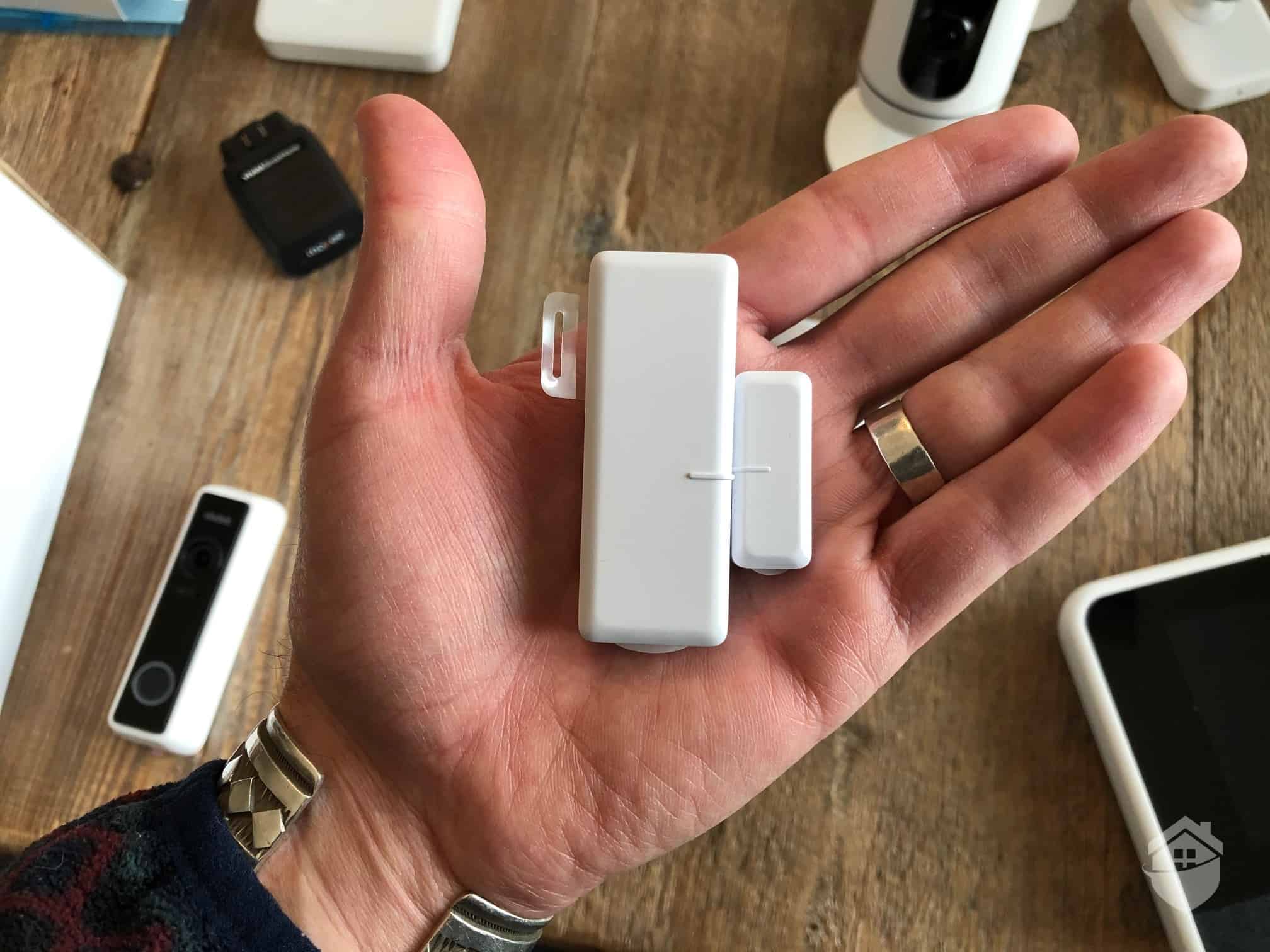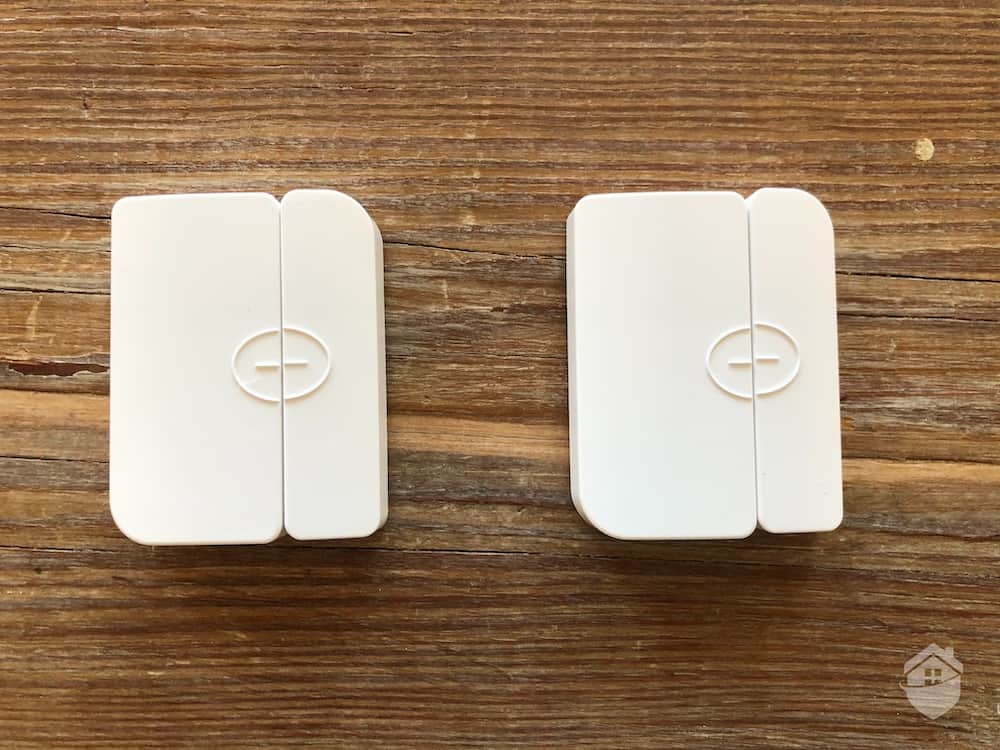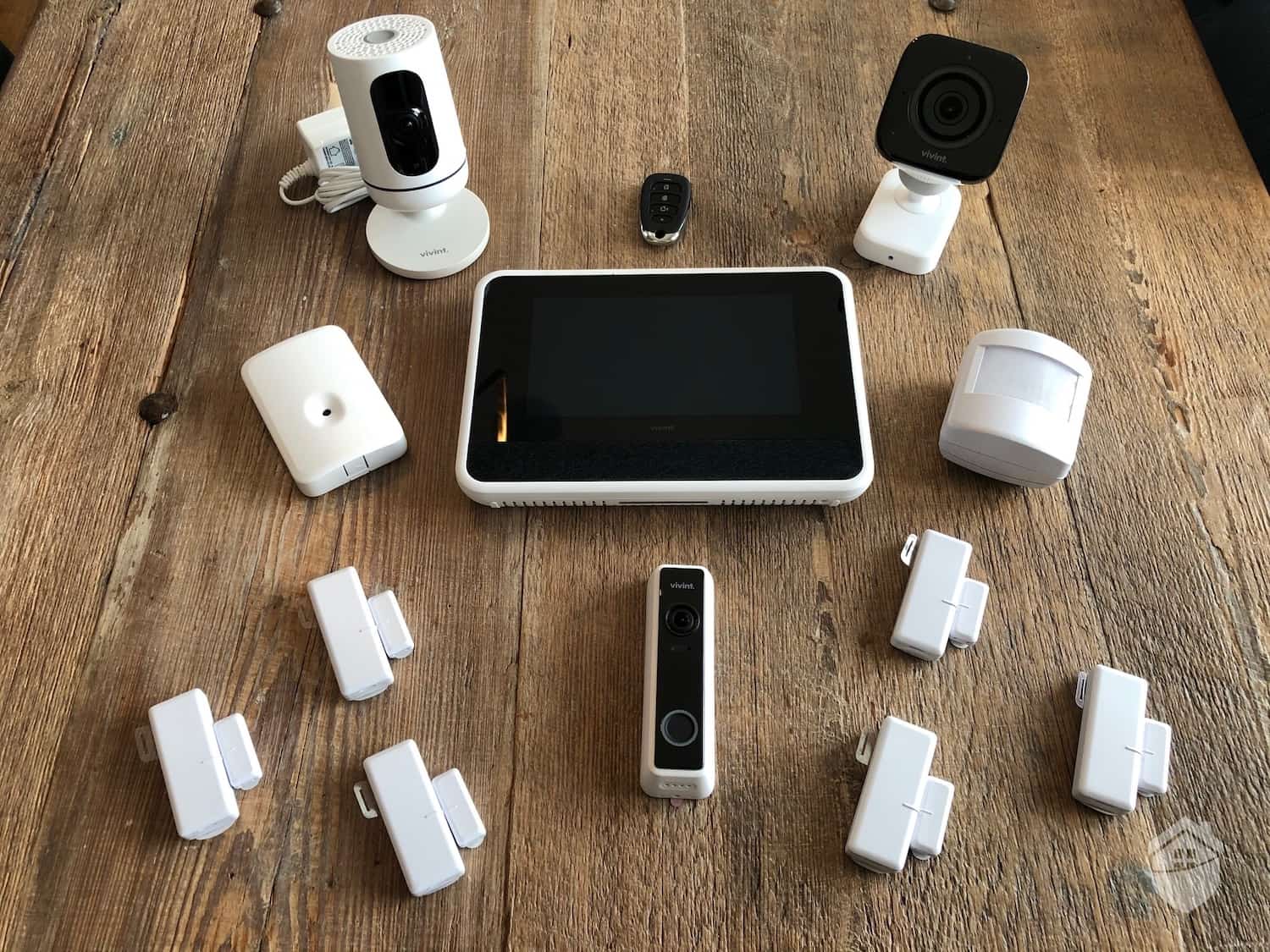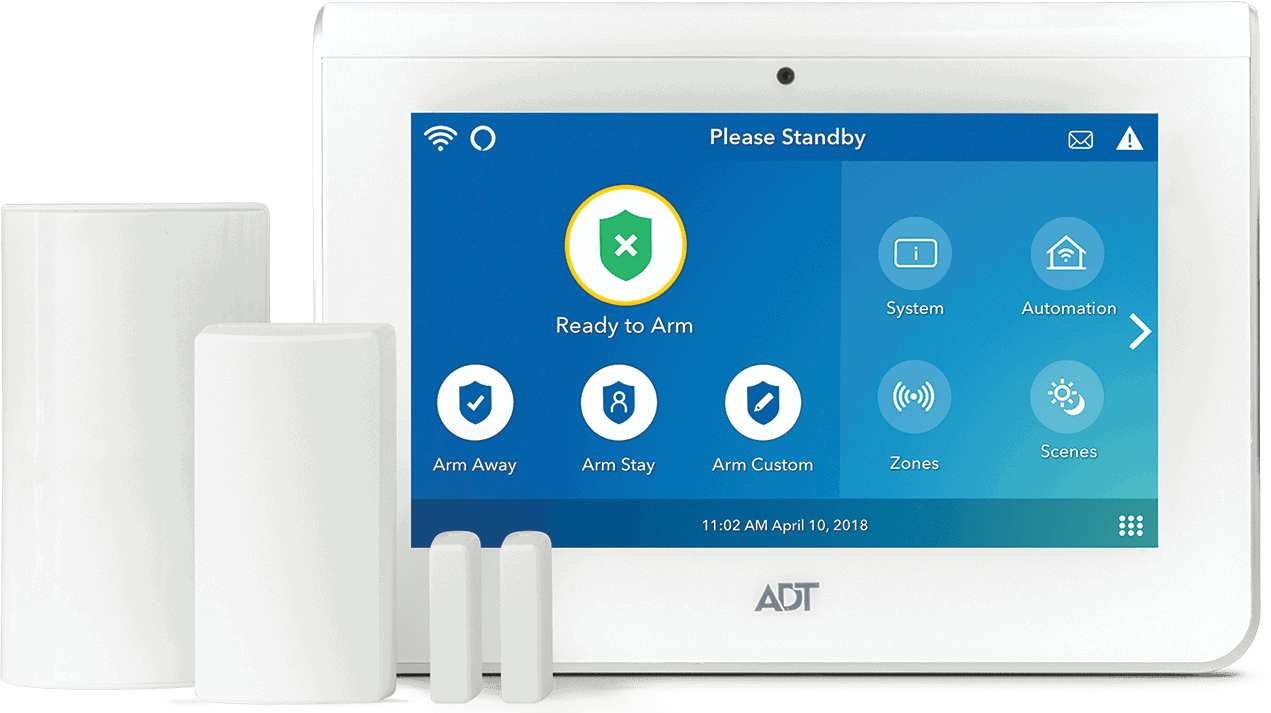When burglars decide to enter your home, they don’t always go through the front door. Sometimes they’ll choose to jimmy open a window and come in that way.
That’s why window alarm sensors are a fundamental part of any home alarm system. These simple pieces of equipment detect when a window has been opened — or broken — and either trigger an alert, sound an alarm, or automatically call for help.
Let’s dive a little deeper to see how these sensors work and whether or not you need them to protect your property. We’ll also discuss glass-break sensors, which are becoming more popular every year.
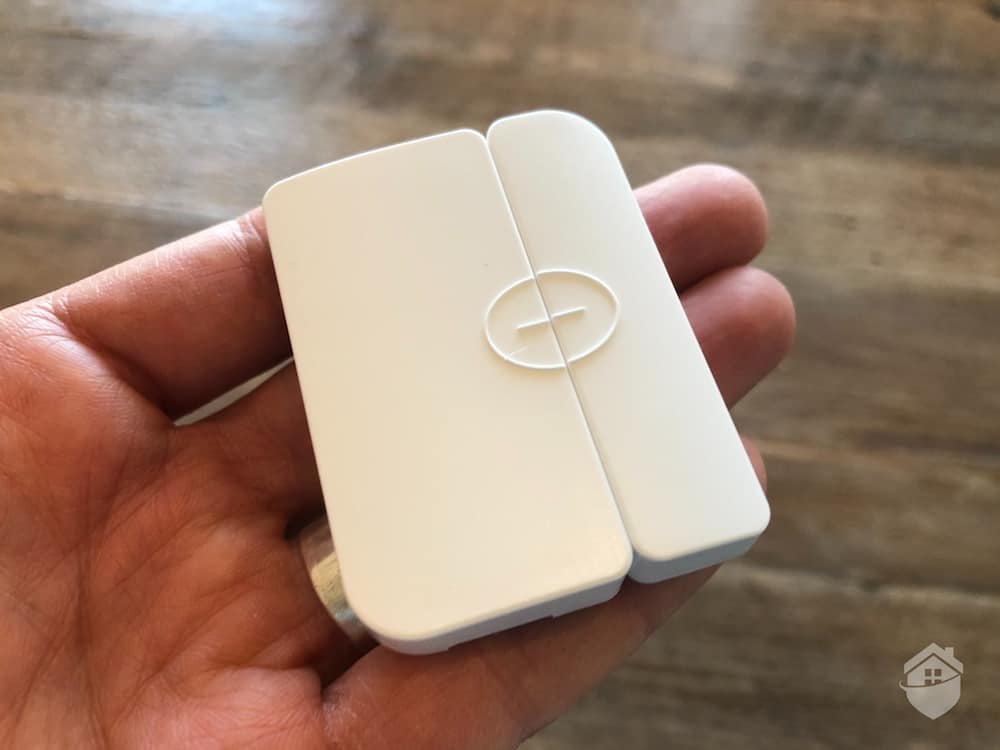
Closeup of Cove Door/Window Sensor
How Do Window Alarm Sensors Work?
Very similar to door alarm sensors, window alarm sensors work using a magnet that completes a circuit when the window is in the closed position. When it’s opened, the magnet is removed, the circuit is broken, and the alarm sounds.
Generally speaking, the sensor is placed on a static portion of the window — usually the frame — and the magnet is placed on the moving part of the window.
FYI: Window alarm sensors alone won’t be enough to keep you fully protected. For that, you’re going to need a complete system. Check out our list of our favorite security systems of 2024 for more guidance.
While they’re fairly simple pieces of equipment, they let you know when the integrity of the home has been breached — a critical function when it comes to protection. That said, there’s another type of window sensor that we should discuss: glass-break sensors.
How Do Glass-Break Sensors Work?
While some burglars prefer to enter silently, others have less finesse. These criminals would rather throw a brick through your window than open it. One of the many downsides to this approach is that it will render your window alarm sensor ineffective — that is, unless you have glass-break sensors.
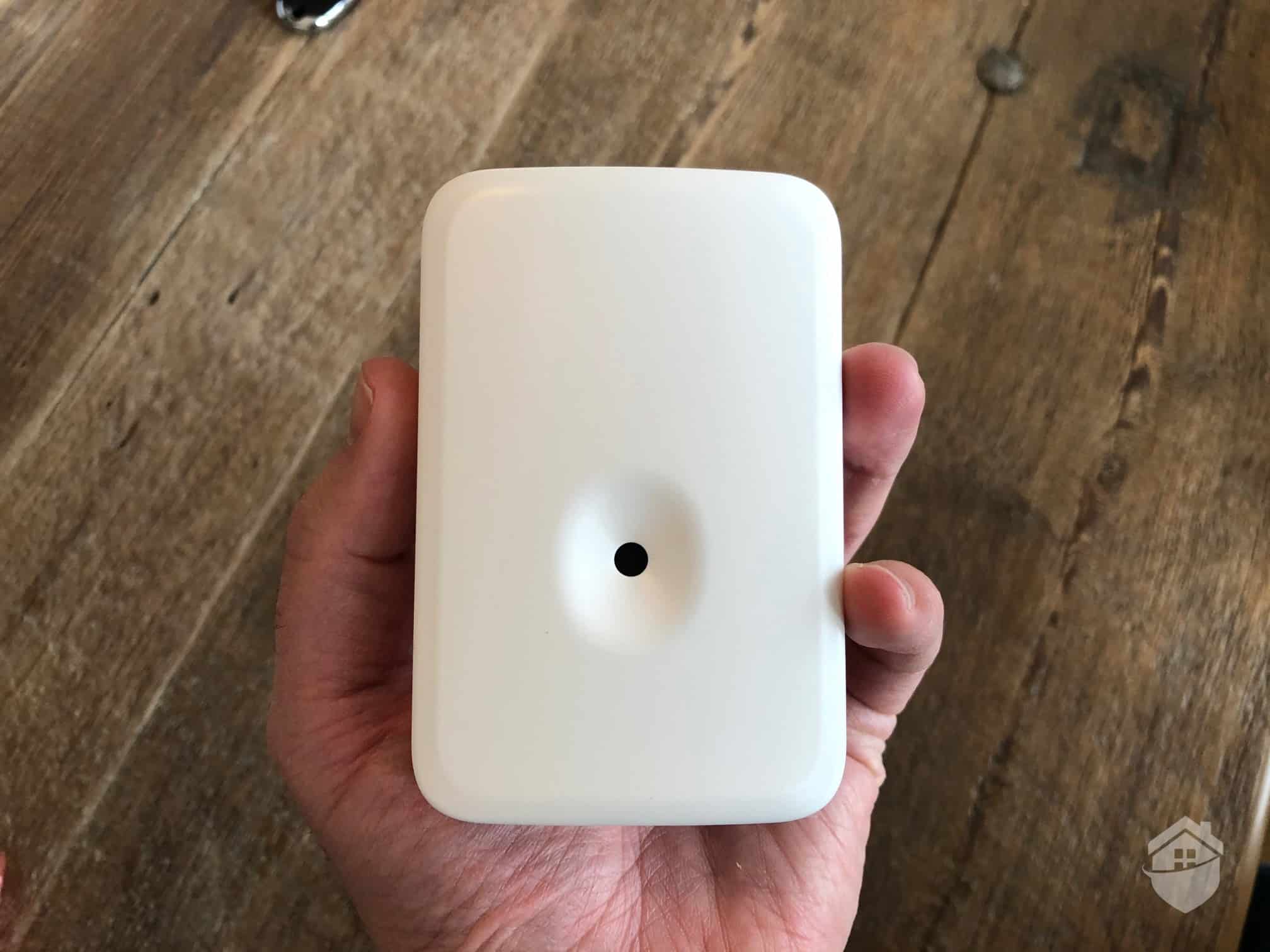
Vivint Glass Break Sensor
Glass-break sensors — also known as glass-break detectors — have tiny microphones tuned to listen specifically for the high-pitched frequencies of shattering glass. When the noise is detected, it triggers an alarm, sends an alert, or summons the authorities.
Pro Tip: While it’s uncommon, a glass-break sensor can be triggered by sounds that aren’t someone smashing your window. A wine glass shattering on the floor or even dropped keys might cause it to trip. Watch out for false alarms!
We recommend having a combination of the two in order to protect yourself from cat burglars and home invasions alike. With that in mind, let’s now talk about where you need to install these sensors.
Do I Need Alarm Sensors on Every Window?
When you’re building a security system, you want to think like a criminal. They’re typically going to take the path of least resistance, where they are least likely to be discovered.
Now, do you need to have sensors on every single window of your house? Maybe. Maybe not. Are all of the windows easily accessible from the outside, or do you have second- and third-story windows that you could only access with a ladder? While you want to make sure your security system offers comprehensive protection, you don’t need to go totally overboard. If a window is inaccessible, you may be wasting money by putting a sensor on it.
Pro Tip: Don’t forget about your basement! Many homes have unfinished basements that have windows to let in light. Criminals may prefer to use these windows as opposed to the ones in your living room, so make sure you’re protected on every floor.
How Much Does a Window Sensor Cost?
While stand-alone sensors can cost as little as $10, it’s unlikely you’re going to need only one. And if you’re looking for higher-quality sensors from more reputable manufacturers, you’re going to pay a little more.
Generally speaking, to outfit a standard home with reliable window sensors, you’re going to spend about $100. If your home is large, if you have more windows than usual, or if you’re looking for top-of-the-line equipment, that will increase the cost.
Pro Tip: If you’re looking to stay secure on a budget, check out our guide to the most affordable home security systems. Staying protected doesn’t have to cost an arm and a leg.
The good news is that most home security kits, like the kits offered by Cove for instance, come with a base station, a motion detector, and a handful of window alarm sensors. And you can always add additional sensors a la carte on top of the base package.
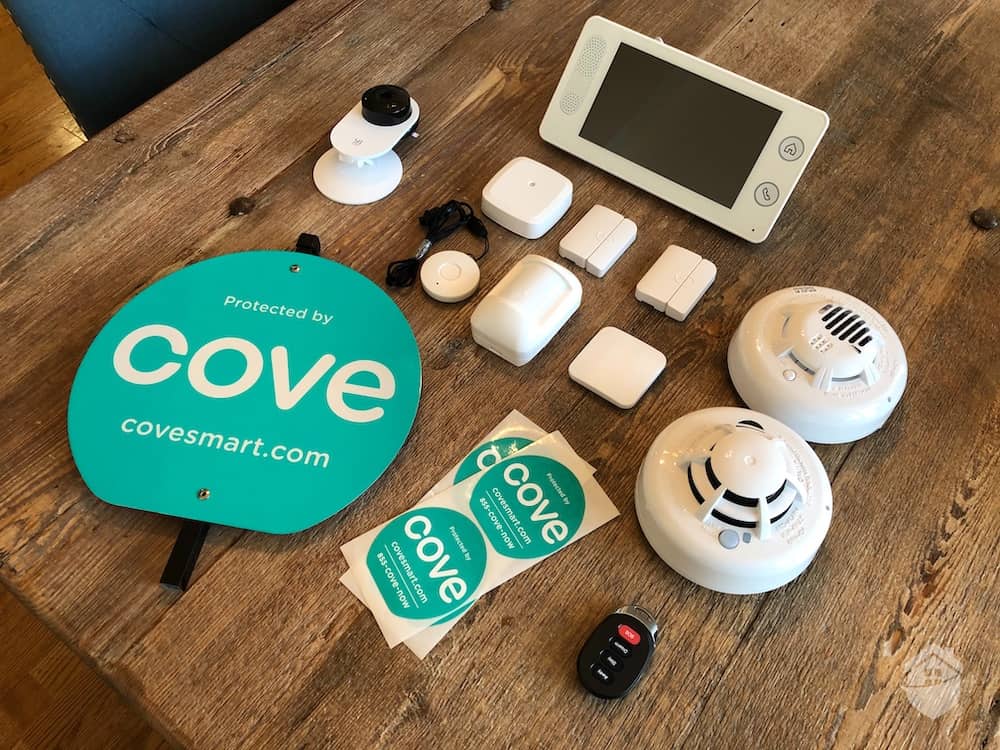
Cove Security System
Now that you know how they work and what the bottom line is going to look like, let’s put the two together.
Are Window Alarm Sensors Effective?
In a word, yes. When it comes to bang for your buck, door and window sensors are one of the most effective and efficient home security products on the market.
When placed on doors and windows that have a high likelihood of being used as entry points by burglars, you can effectively create a system where you’ll know if anyone is coming in or going out. Couple them with strategically placed glass-break sensors, and you no longer need to worry about intruders using your windows as points of entry.
And when you have your sensors integrated into a larger security system, you’re going to feel even safer. For more information on that, you might want to check out our ADT review. They’re one of our favorites.
Are Window Alarm Sensors Worth It?
Again, the answer is a resounding yes. One of the fundamental concepts of a security system is the ability to be notified when someone has unexpectedly entered your property. Doors and windows are the two easiest ways to do this, so it makes sense that those would be the elements you’d want to protect first.
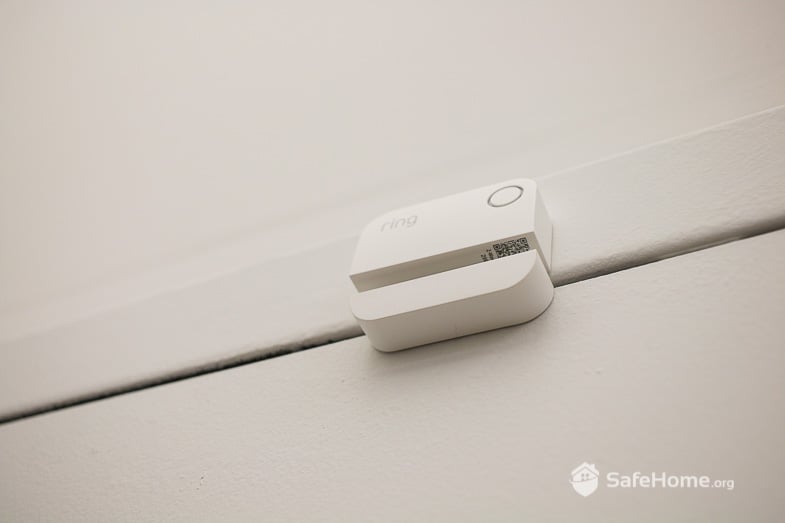
Ring Door and Window Sensor
While they won’t necessarily prevent criminals from breaching your home — for that, you might want to look at our list of the best home security cameras of 2024 — they will be your first line of alert should someone try to gain entry. Couple them with a loud alarm (we recommend 100 dB or higher), and most intruders will hightail it out of your home before you know what happened.
Final Thoughts on Window Alarm Sensors
No home security system is perfect, but no home security system is complete without window alarm sensors — plain and simple.
They’re one of the lowest-cost pieces of equipment, but one of the most important in helping you bolster the security of your home. By making sure no one can come in without your knowing about it, you’re well on your way to having a complete and comprehensive home security solution.
Window Alarm Sensor FAQs
- How much are window alarm sensors?
Individual window alarm sensors are relatively inexpensive; you can get decent ones for about $10, while more expensive sensors range from $20 to $30 apiece. Make sure you have enough to cover all potential entry points to your home. You might want to couple them with a more robust security system.
- How do window alarm sensors work?
Window and door alarm sensors use magnets to hold a circuit closed. When the window or door is opened, the magnet moves and the circuit is opened, triggering an alarm or alert.
- Will my alarm system go off if glass is broken?
Most security systems will not be triggered by breaking glass alone unless a glass-break sensor is integrated into the suite of security equipment making up the overall system.
- Do I need to put sensors on all of my windows?
Window alarm sensors are only really necessary on windows that could feasibly be reached from ground level. Very few burglars are prowling around in the night with 20-foot ladders, so placing sensors on second-story windows doesn’t make a whole lot of sense.
- Can window alarm sensors trigger false alarms?
Sometimes window alarm sensors can go off unnecessarily. To prevent this from happening, make sure the sensor and the magnet are aligned correctly and are close enough together that contact is assured when the window is closed. It might take some tweaking to get it right.


